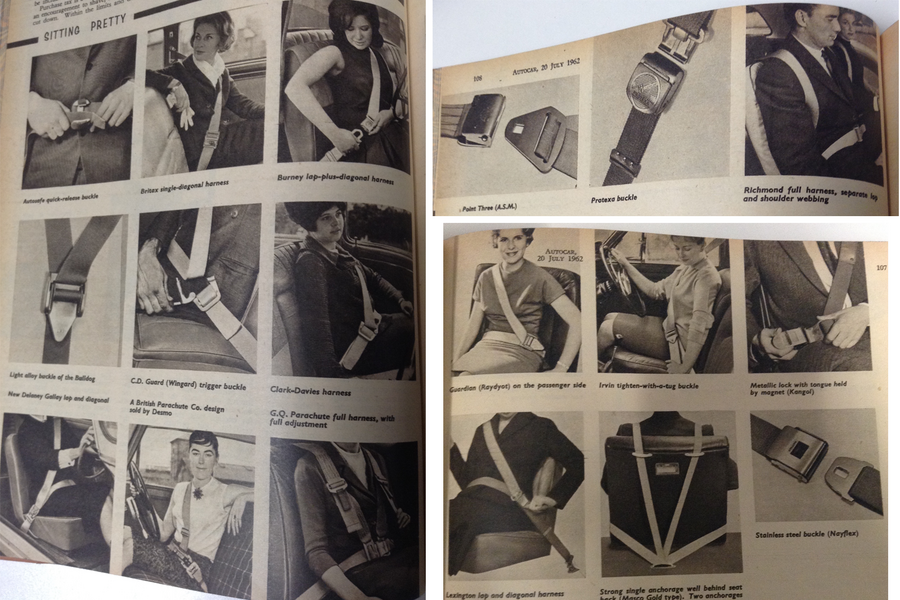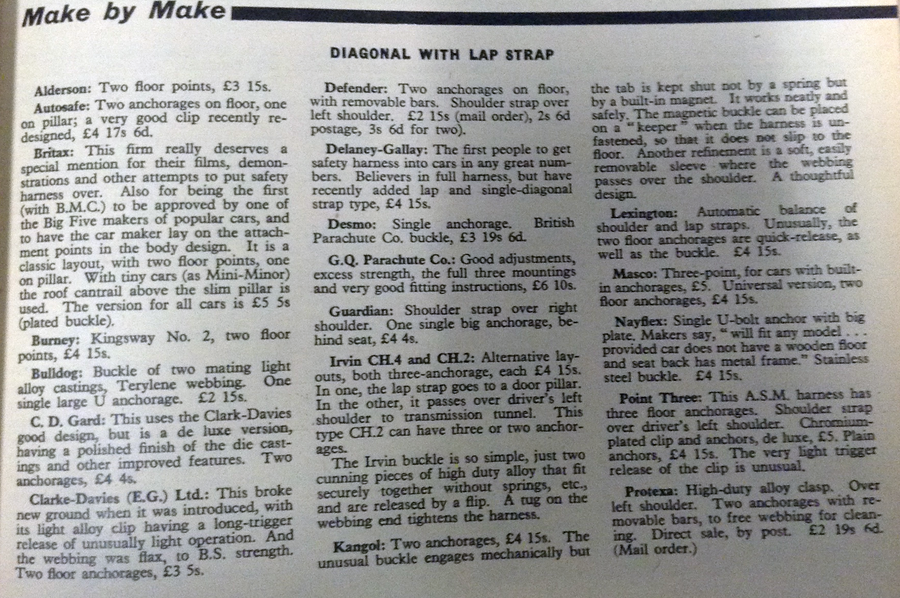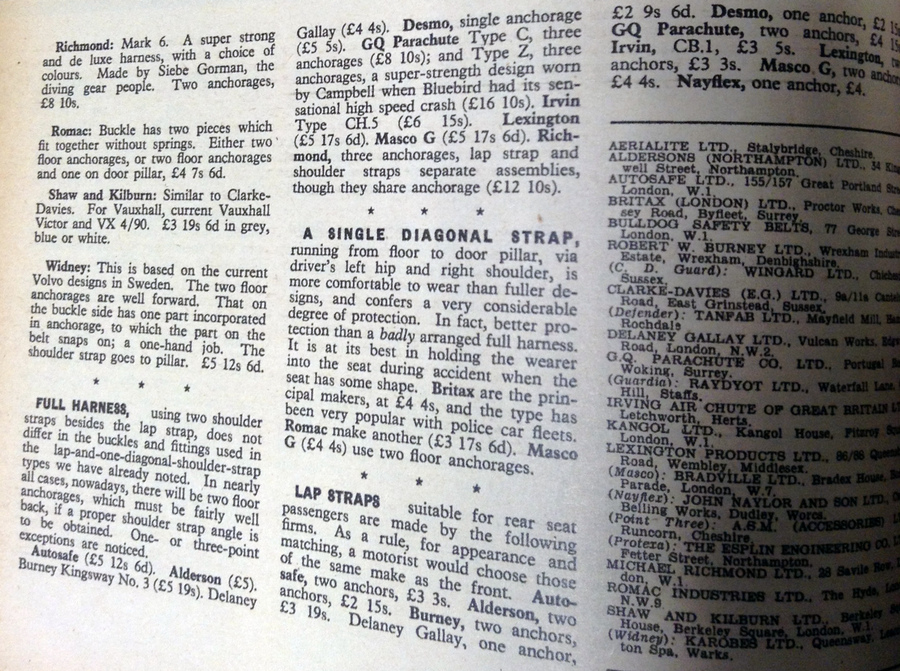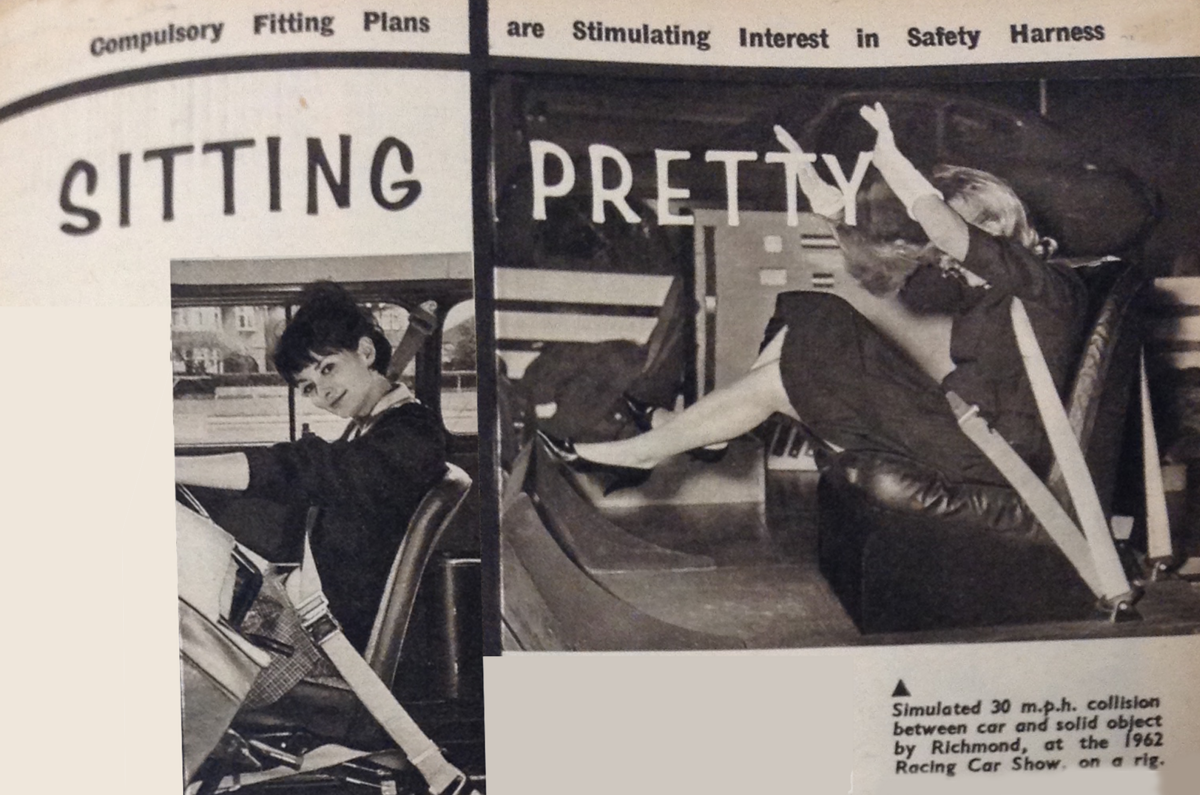Seatbelts are one of the most simple yet also most vital safety features in cars.
According to the AA, around 95% of Britons would never dream of driving without one. Therefore, it seems crazy that it’s only been mandatory for all occupants of cars to wear one since 1991.
In Britain, it became compulsory for seatbelt anchor points to be fitted in new cars in 1965, and two years later, the belts themselves also became a requirement, as did the retrospective fitment of them on cars built in ’65 and ’66.
By the 1970s, it had become evident that half of road deaths could be prevented by wearing seatbelts, while AA surveys showed seat belt wearing rates to be around the 30% mark, with this rising to 40% when campaigns such as the famous ‘clunk-click every trip’ were running.
In 1983, not wearing a seatbelt in the front seats became illegal. Once the law came into effect, the rate of seatbelt wearers shot up to 95%. In 1989, children in the rear were also required, and in 1991 this was extended to adults.
Today, it is estimated that 34% of car occupants killed in collisions are not wearing seatbelts, despite these people making up only around 5% of drivers.

Back in 20 July 1962, spurred by talk of them being made compulsory, Autocar discussed the merits of various systems of the ‘safety harness’.
“It is very rare for an injured person who has remained inside to have had any personal contact with the other vehicle or lamp post at all,” we began.
“He was almost certainly injured by his collision with his own car. He would not have so collided if the harness had kept him safely in his seat. The great majority of fatal accidents take place at normal speeds, in normal traffic, and however damaged the fronts of the cars involved may be, the steel passenger compartment holds together well.”
So, we wondered, “why has the Minister for Transport been so long deciding to make the fitting of harnesses compulsory in new cars?
“He has probably been waiting for the British Standards (BS) Institution to complete their research with their new dynamic test rig. It can simulate forces at various angles.”
At that time, the BS’s specification already imposed upon seatbelts corrosion resistance, limited webbing stretch, and strength far higher than those of airliners.
The BS also conducted static loading tests, whereas, other researchers tended to use sledges on rails. However, this was ineffective, as “the artificial condition of anchorage in the strong boiler plate and girders of which such sledges are made has had its limits. Bad geometry, which would impose too great an anchorage strain on the light sheet steel of cars, is not shown up”.
Nor were harnesses “in which the shoulder strap runs straight down the seat back” shown up. “In an actual popular car seat, none too strong, with a live and compressible occupant, there may be virtually no protection against “jack-knifing” and banging the head or chest on fascia and steering wheel”.
Back in 1962, some BS-approved harnesses had one single anchorage point behind the seat, with a big reinforcing plate under the car’s floor. Some had two or three.
With two, one was on or near the transmission or the body sill, which were strong points – unlike the centre of the floor. We therefore correctly deemed having multiple anchors as the way forward.
Whether or not having one of the points on the right or left of the driver was still up for debate, though. Autocar suspected that either would be just as good either way. “As the torso tilts, a left shoulder strap seems to catch and bear down on the shoulder, preventing further tilting”. Today, of course, all cars have it over the driver's right shoulder.
The BS had set ‘good’, ‘better’ and ‘super’ standards at that time. BMC, Ford and Rootes all recommended good ‘approved extra’ seatbelts.
We then went on to detail the various aftermarket seatbelts on the market at the time, which can be read in full in the pictures below.






Join the debate
Add your comment
No rear seat belt sensors
This obviously became very ingrained because when asking my now grown up daughter to pull her car forward ten feet on the drive, she proceeded to put her seat belt. When asked why she needed to put her belt on to move such a short distance. I was informed it was because I had always told her “That the car would stop and not move without the seat belt being fastened”
No rear seat belt sensors? Really?
My 2010 (so not that new) Hyundai has sensors for the rear belts, with tell-tale lights on the dashboard. It doesn't have an audible warning, however (which is a good thing, as the sensors assume our infant strapped into his isofix-mounted seat is unbelted, because the vehicle seatbelt isn't buckled).
Shonky photos
Wait... There are actually